Controlling Relay and LED via Downlink Command
In this section, you will use the Antares Workshop Shield on the Lynx-32 Antares Development Board module. The Antares Workshop Shield contains temperature and humidity sensors (DHT11), relays, LEDs and push buttons. In this tutorial, you will control the relays and LEDs via downlink. The process of sending this downlink uses POSTMAN software which performs a HIT API downlink to the Antares Platform.
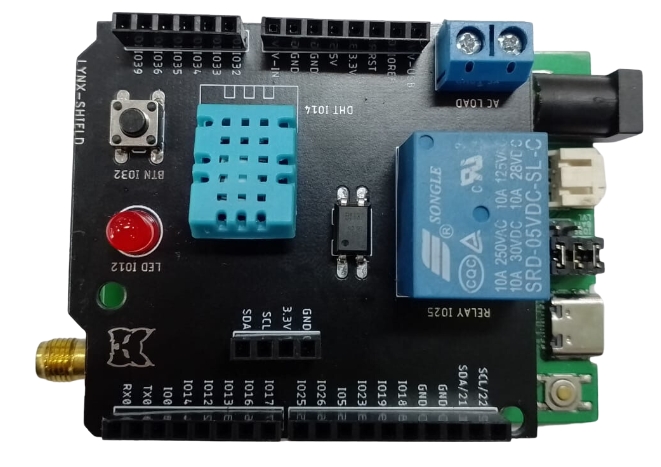
Prerequisites
The required materials follow the General Prerequisites on the previous page. If you have not prepared the requirements on that page, then you can visit the following page.
General Prerequisites ESP32 LoRaThe additional materials specific to this project are as follows.
Shield Workshop Antares
Postman Software
Follow These Steps
1. Launch the Arduino IDE application
2. Opening Sample Programme
Here is the programme code of the DOWNLINK_RELAY_LED_CLASS_A example
Here is the programme code of the DOWNLINK_RELAY_LED_CLASS_C example
3. Set LoRaWAN Parameters in Antares
On the Antares Device console page, set the LoRa by pressing the Set LoRa button as shown below.
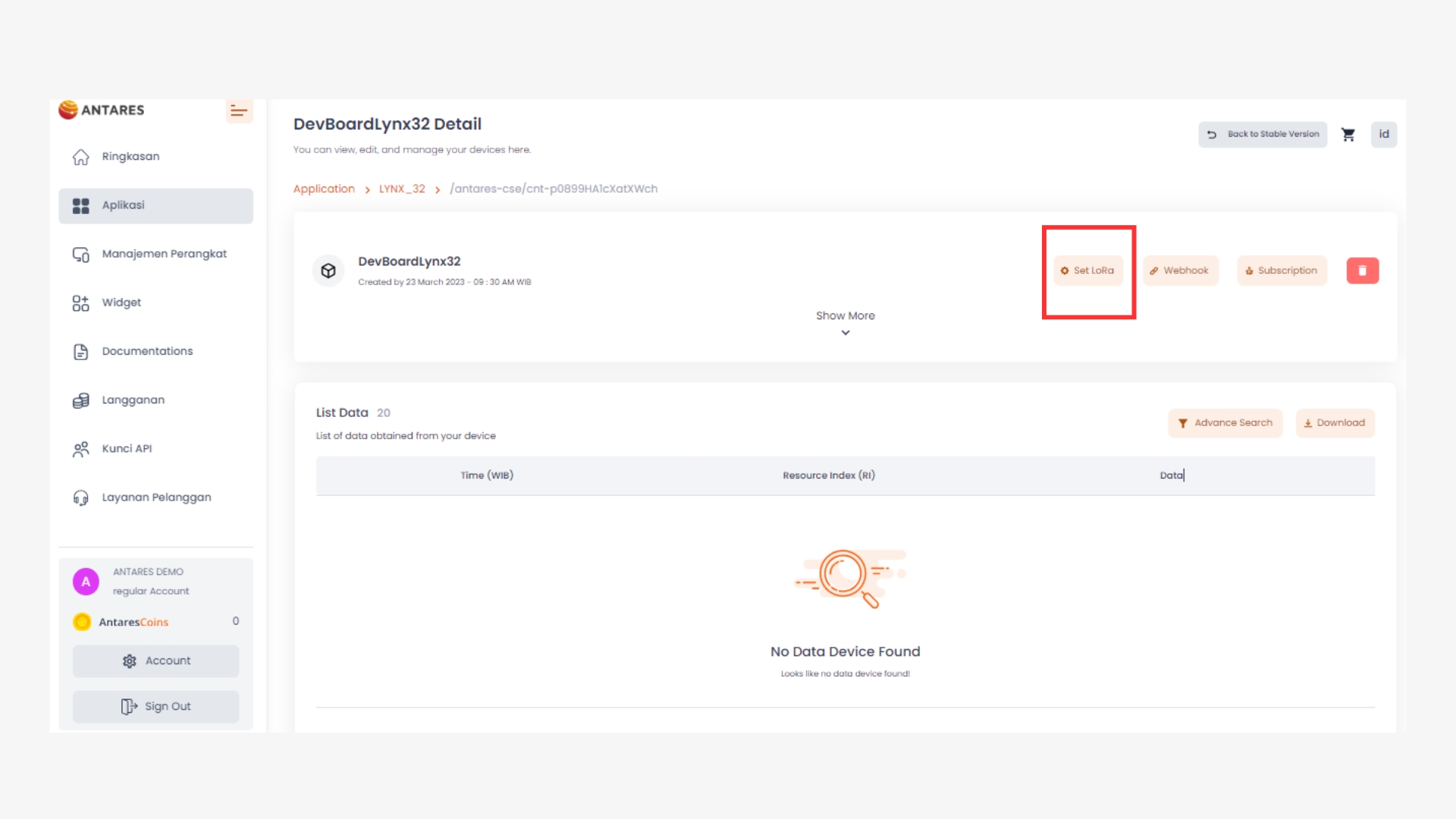
Input LoRaWAN parameters with Lora Device Class A, Activation Mode ABP, ABP Parameters Inherit as shown below.
Don't forget to save (copy) the Network Session Key and Application Session Key parameters before clicking Set LoRa to facilitate the next process.
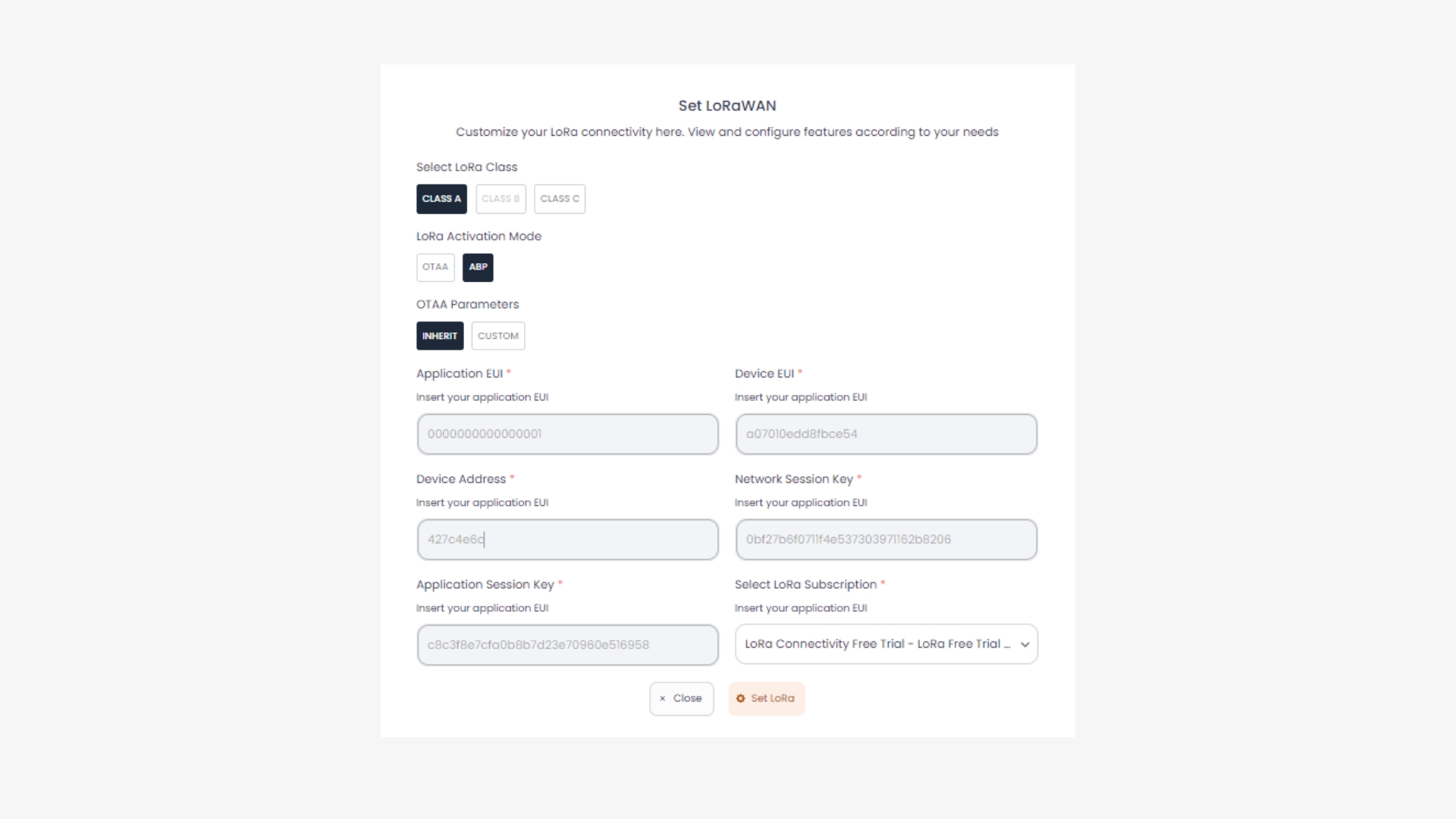
Make sure your antares account has an active LoRa package.
Input LoRaWAN parameters with Lora Device Class C, Activation Mode ABP, ABP Parameters Inherit as shown below.
Don't forget to save (copy) the Network Session Key and Application Session Key parameters before clicking Set LoRa to facilitate the next process.
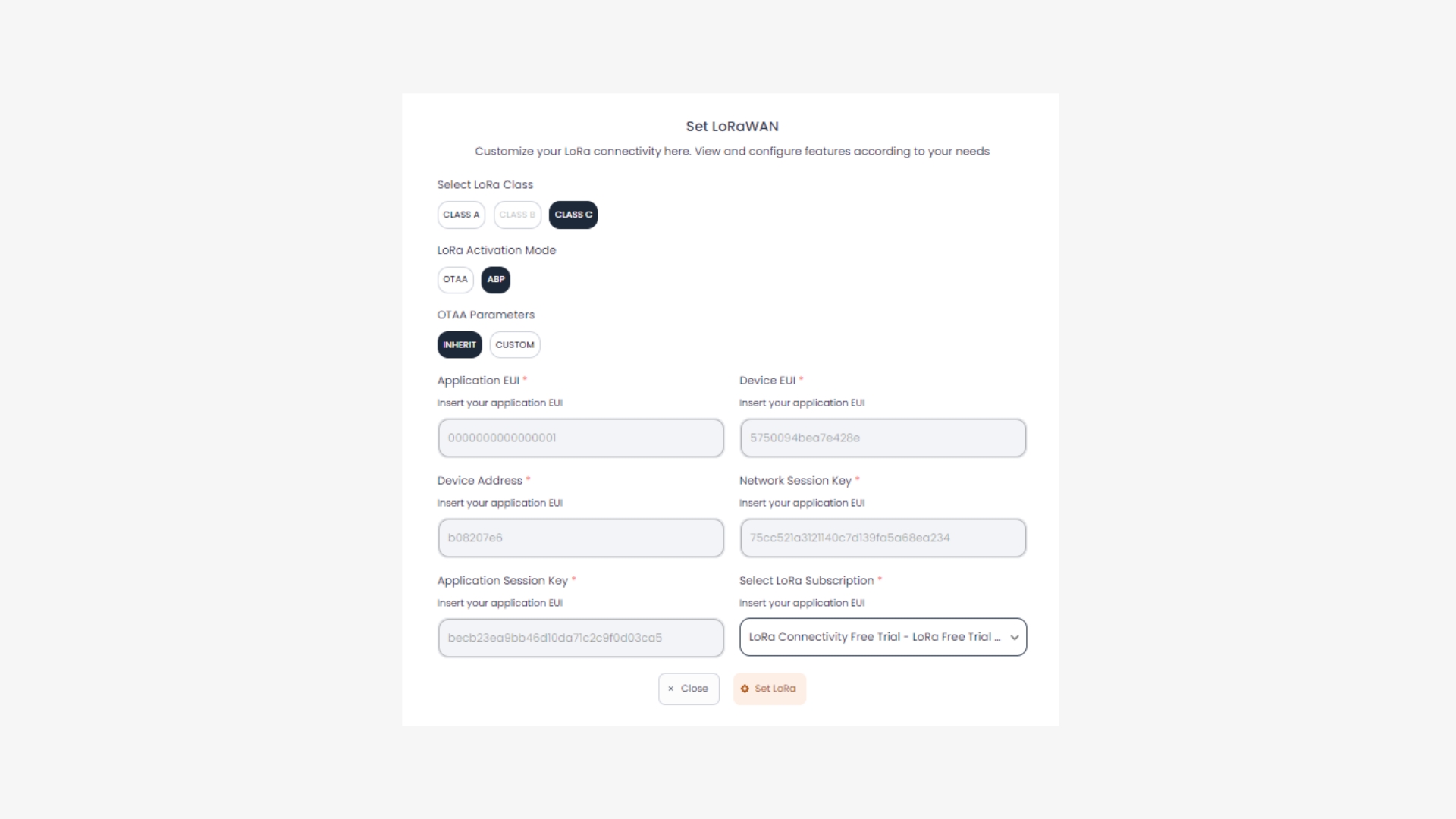
Make sure your antares account has an active LoRa package.
4. Set LoRaWAN Parameters in Programme Code
Change the LoRaWAN ABP parameters in the following variables *devAddr , *nwkSkey and *appSKey. Adjust to the parameters in the Antares console.

Jika anda lupa menyimpan *nwkSkey dan *appSKey pada langkah sebelumnya maka lihat accesskey pada akun antares anda kemudian ikuti format berikut.
5. Compile and Upload Program
Connect the Lynx-32 Development Board to your computer and make sure the Communication Port is read.
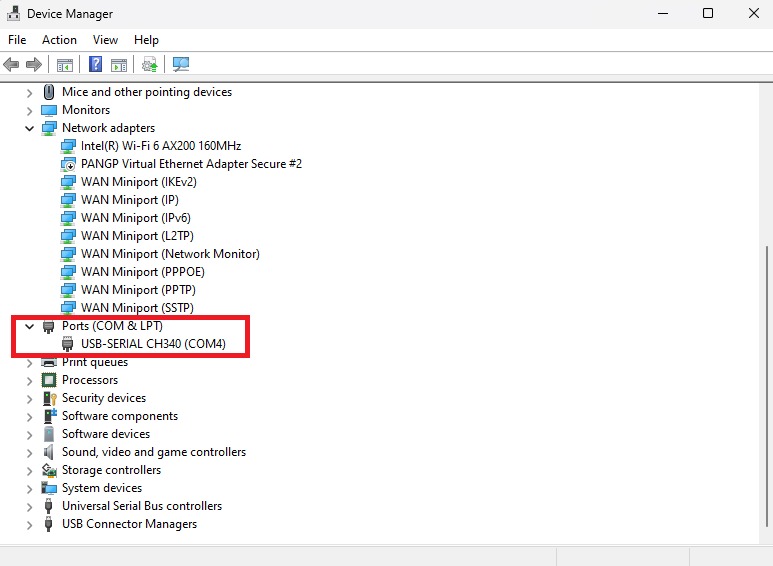
Set up the Lynx-32 Board by clicking Tools > Board > ESP32 Arduino in the Arduino IDE, then make sure the board used is the ESP32 Dev Module. Select the port according to the communicaion port that is read (in this case COM4). The result will look like the following picture.
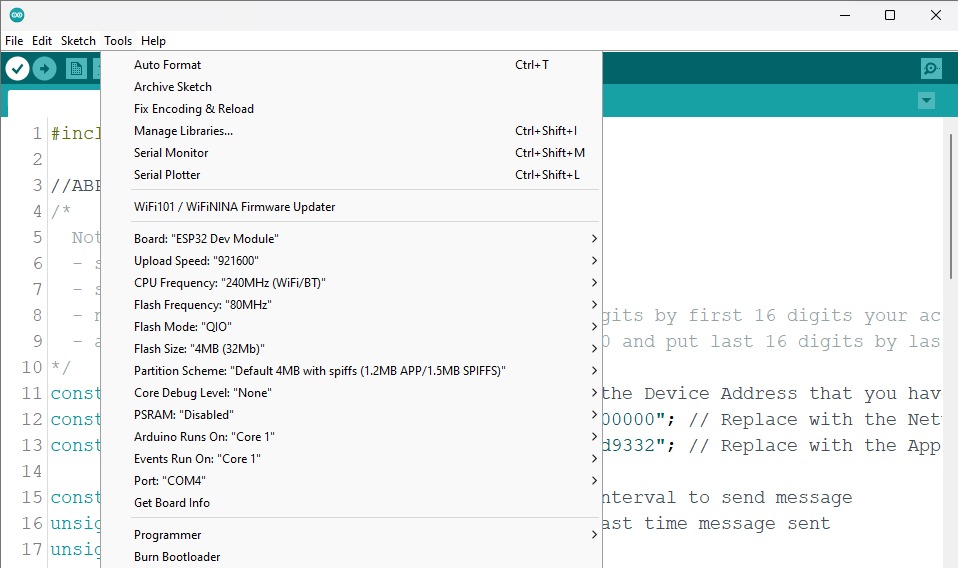
After all the setup is complete, upload the programme by pressing the arrow icon as shown below. Wait for the compile and upload process to finish.
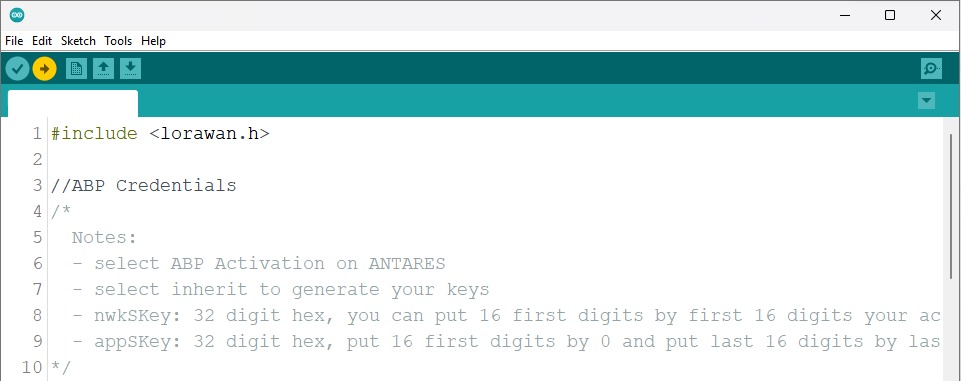
If the programme upload is successful, it will look like the following image.
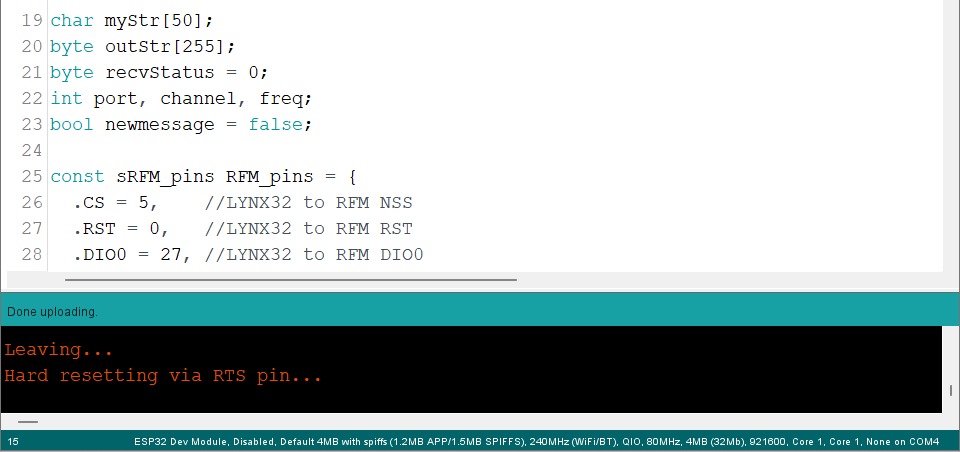
After uploading the programme, you can view the serial monitor to debug the programme. The serial monitor icon is shown in the following image.

Set the serial baud rate to 115200 and select BothNL & CR. The result will look like the following image.
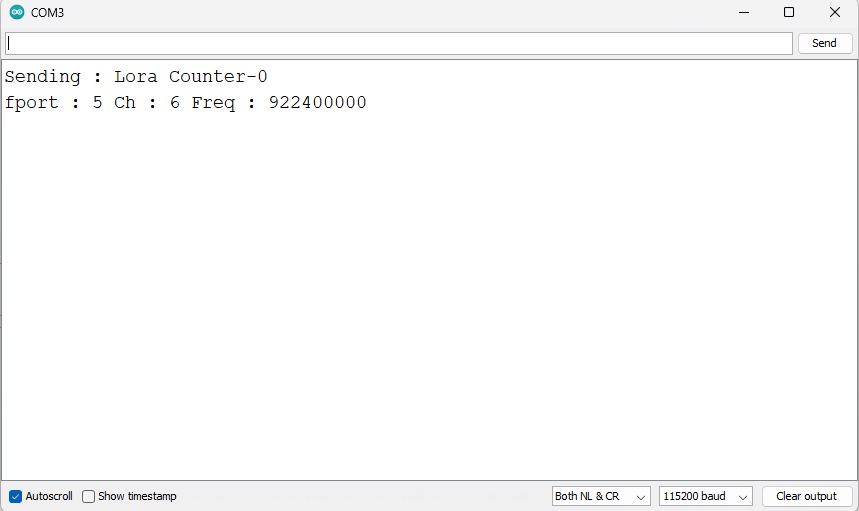
Make sure the serial baud rate matches the value defined in the programme code. If the serial baud rate is not the same between the programme code and the serial monitor, the ASCII characters will not be read properly
6. Setup POSTMAN Software
In this step, you need POSTMAN software. You can input the end-point, request header, and request body first by following the following format.
End Point
Methode
POST
URL
https://platform.antares.id:8443/~/antares-cse/antares-id/your-application-name/your-device-name
Request Header
Key
Value
X-M2M-Origin
your-access-key
Content-Type
application/json;ty=4
Accept
application/json
The result is as shown in the following image.

Next you need to input the request body to follow the following format.
Request Body
In the POSTMAN software, select the Body tab then select raw and enter the payload according to the request body you want to use as shown below.
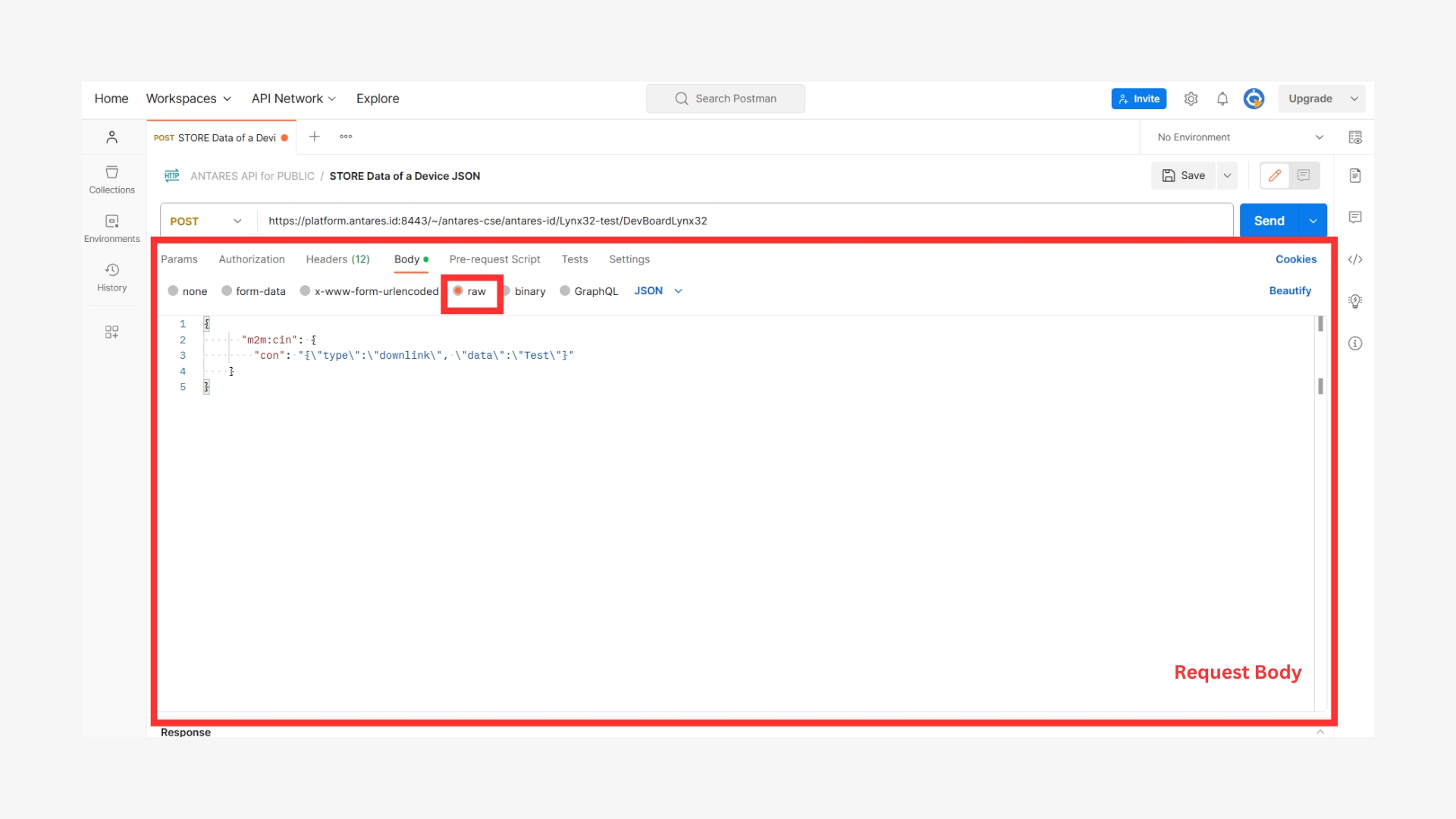
7. Sending Downlink Messages
After the POSTMAN software setup is complete, it's time to send the downlink command. The "data" field is filled with a hexadecimal number of 4 Inputs as a message to be sent via the downlink lorawan. If you have finished filling in the "data" field, then press the Send button on the POSTMAN software.
There are 4 Hexadecimal Inputs to control the Relay and LEDs listed in the table below.
Input Hexadecimal
Relay
LED
AA00
OFF
OFF
AA01
OFF
ON
AA10
ON
OFF
AA11
ON
ON

If the HTTP request through POSTMAN software is successful, the POSTMAN software response section will display a message as shown below.
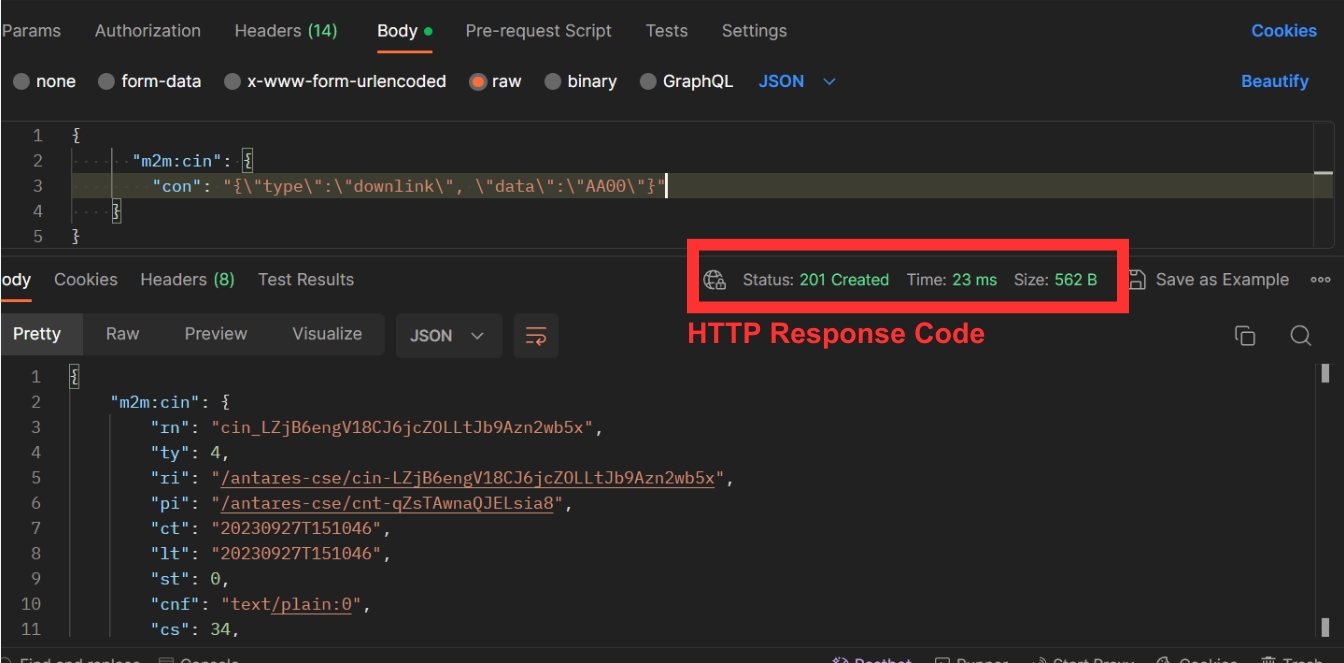
8.Check Data in Antares
After the step of sending the downlink message in the POSTMAN software is successful, then open the Antares device page and see if the downlink command has entered Antares.


The form of downlink data received by the antares will be in JSON format as follows.
9. View Downlink Messages
The downlink messages forwarded from Antares to the Lynx-32 Development Board can be seen in the Serial Monitor as shown below.

The received downlink message commands the Relay and LED to Switch Off or On

Last updated